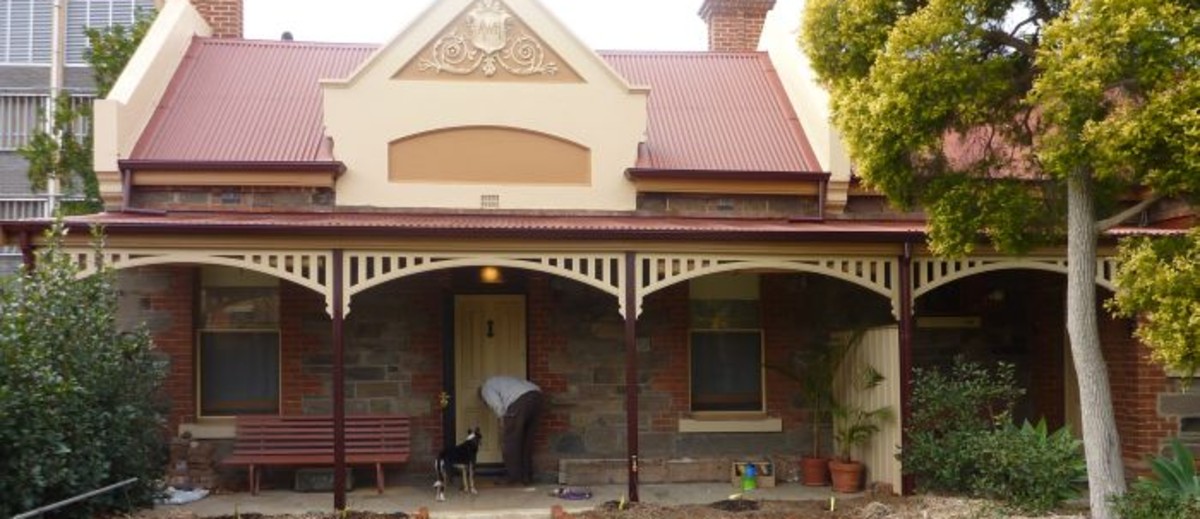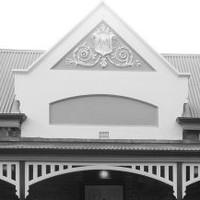On his death in 1897, wealthy South Australian businessman Sir Thomas Elder bequeathed £25 000 to establish a trust to be called 'Adelaide Workmen's Homes'. The purpose of the organisation was to construct and manage cottages for working men in or near Adelaide. Elder wanted the scheme to be modelled on the Peabody Donation Fund in the United Kingdom. Merchant banker George Peabody had given a large amount in 1862 to provide housing for the poor in London.
According to the South Australian Register of 17 June 1898, the executors of Elder's will, Robert Barr Smith and Alexander Martin, held a meeting 'of all persons desirous of expressing their views on the best means of employing the bequest' at the offices of Elder, Smith & Co. on the previous day. The gathering included ministers of religion, parliamentarians, businessmen and a representative of the United Trades and Labor Council. Proposals were sent by the mayors of Port Pirie and Moonta but Barr Smith considered these towns to be too far from Adelaide. Suggestions were made for homes for young blind men and women, and workmen with physical disability 'who consequently were severely handicapped in the struggle for existence'. There were no government pensions or benefits to support people with disability, sickness or injury then.
Barr Smith’s views were taken up. He noted that the aims of the Adelaide and London trusts were the same, namely 'the comfort and health of working men, giving them convenient nearness to their work'. But he pointed out that the high cost of land in London had led to the construction of high-rise housing with a density of 725 persons per acre (0.4ha), about 13 times the density of London as a whole. He did not think that such housing was appropriate or necessary in Adelaide. He advocated 'cottage homes'. Barr Smith also noted that even with a high population density in the London estates, infant mortality was lower than the average as a result of 'well-ordered sanitary houses under strict supervision and in perfect repair'. The Advertiser of 17 June 1898 reported him wanting the ‘best sanitary arrangements [and] homes made of such as kind as would build a national character'.
Industrious and deserving workmen
The resulting housing scheme was targeted at 'industrious and deserving' workmen, not the 'dependent poor'. Occupancy was to be a mark of character, independence and financial stability. The Adelaide Workmen's Homes Inc. Trust Deed stipulated that the homes were to benefit working men and, unusally, working women by providing them 'suitable dwellings at a reasonable rental' and within 10 miles (16km) of Adelaide’s GPO.
The trustees of Adelaide Workmen's Homes, formed on 30 September 1898, were Alexander Martin (chairman), Robert Barr Smith, Allan Campbell MLC, Sir Edwin Thomas Smith MLC, Egerton Lee Batchelor (Minister of Education), David Morley Charleston MLC and David Murray (a merchant). The secretary was F Stevens of 44 Grenfell Street, Adelaide.
The Trust Deed was amended by legislation in 1933 to enable the trustees to be remunerated. An amendment in 1966 broadened the residential eligibility criteria to include pensioners and aged persons who had been workmen or were descendants of workmen, which reflected the long occupancy of residents.
The organisation’s first homes were completed in 1899. Designed by architect Charles Rutt, they were located on a site bordered by Wakefield and Angas Streets and a newly created Elder Street in Adelaide. In 1968 the Adelaide City Council purchased the homes with a view to demolishing them to make way for an extension of Frome Street. By 1972 only 13 of the original cottages remained along Frome and Angas Streets. These were saved, renovated and reoccupied, but were no longer the property of the organisation.
In 2013 Adelaide Workmen's Homes owned more than 200 homes and real estate in Richmond, Mile End, Norwood and Woodville Gardens which it continues to rent. A 1966 legislative amendment which increased its domain for the purchase of real estate to 100 miles (160km) ‘not further in a straight line from the GPO’ has never been implemented because the original intention was to house the workers in Adelaide. An Act in July 2013 amended the constitution again and the name of the organisation changed to Adelaide Workers’ Homes Inc.
Adelaide Workmen's Homes Inc., http://www.adelaideworkmenshomes.com.au/
Adelaide Workmen's Homes Inc., Deed of trust, 30th September, 1898 for the Adelaide Workmen's Homes (Adelaide: WK Thomas, Printers, 1898)
Adelaide Workmen's Homes Inc., Report to Adelaide Workmen's Homes (Adelaide: Adelaide Workmen's Homes Inc., 1901)
Advertiser, 17 June 1898, 'Adelaide Workmen's Homes', p5
Advertiser, 26 July 1965, 'Adelaide Workmen's Homes Incorporated', p2
Bond, Colin, 'Adelaide Workmen's Homes' in Preserving historic Adelaide, eds Colin Bond & Hamish Ramsay (Adelaide: Adelaide Residents Society Incorporated, 1978) pp66–71
Marsden, Susan, Paul Stark & Patricia Sumerling eds, Heritage of the City of Adelaide: An illustrated guide (Adelaide: Corporation of the City of Adelaide, 1990) p204
O'Neil, B, pers. comm. with James Hooper, Adelaide Workers' Homes Inc., 11 December 2013
Peabody Trust, http://en.wikipedia.org/wiki/Peabody_Trust
South Australian Register, 17 June 1898, 'Adelaide Workmen's Homes', p4
South Australian Register, 26 May 1900, 'The Adelaide Workmen's Homes', p6
State Library of South Australia, SRG 325 Adelaide Workmen’s Homes records



Add your comment